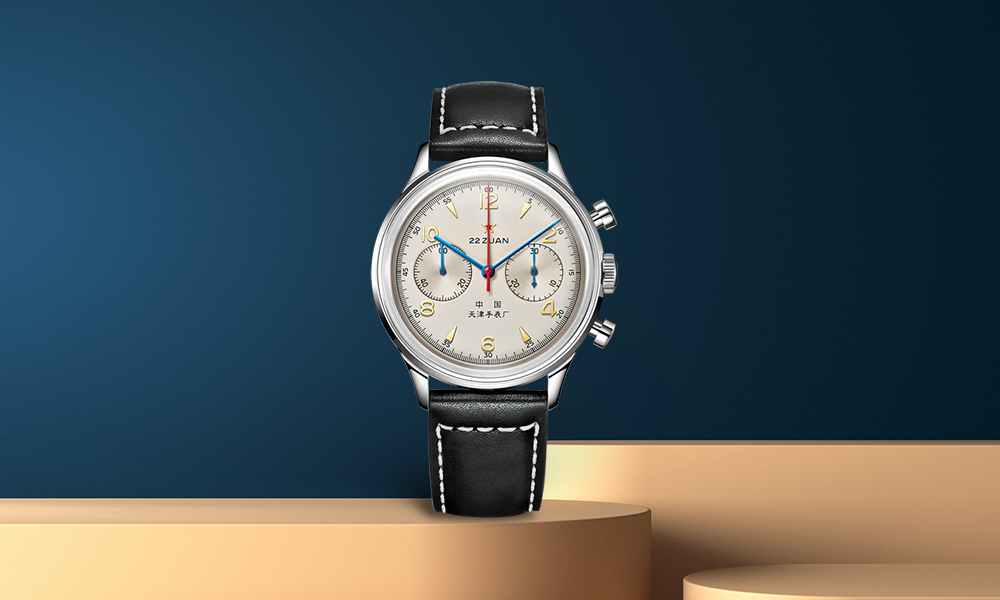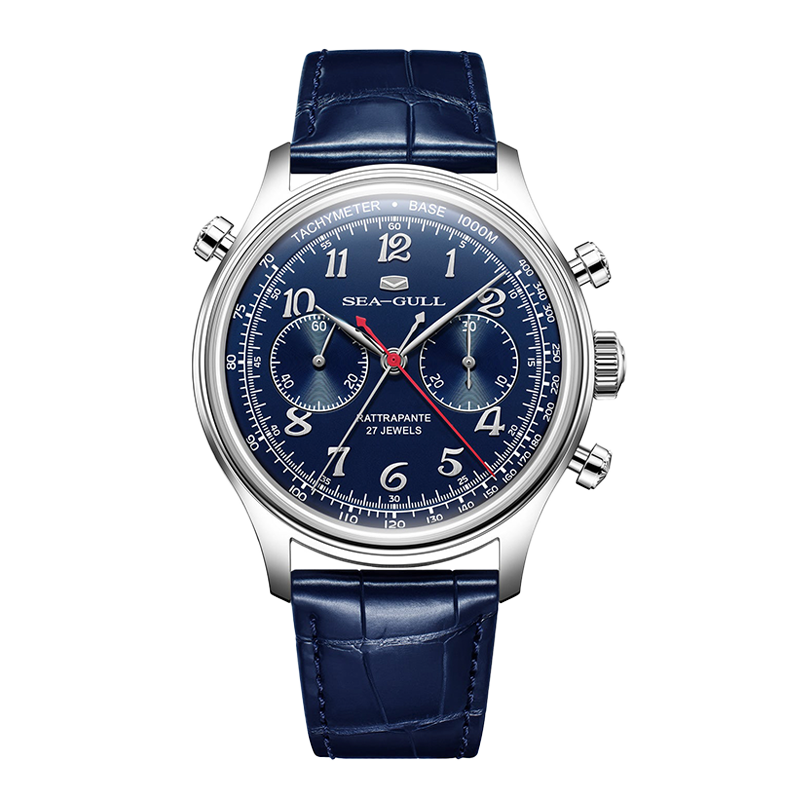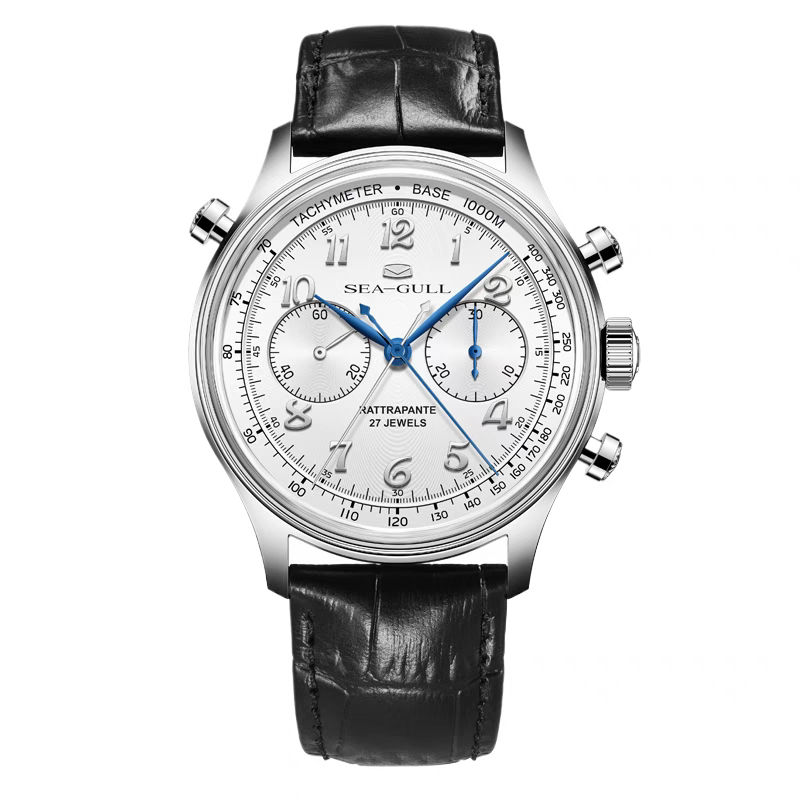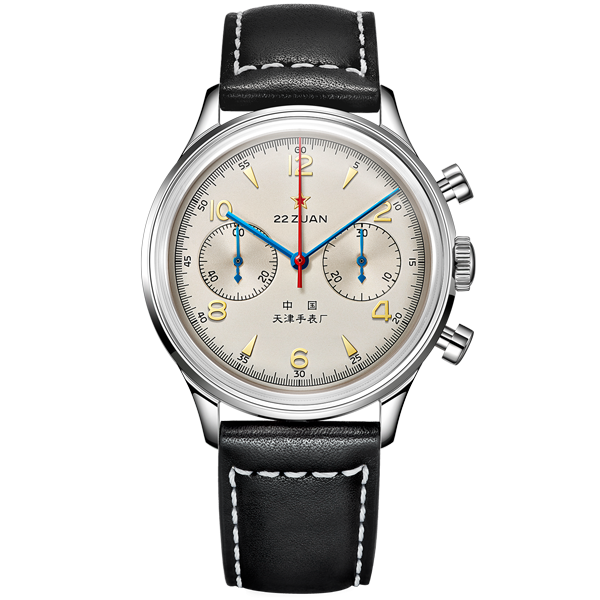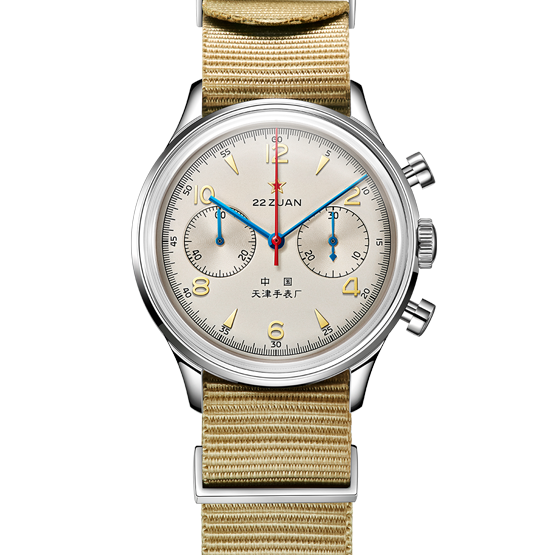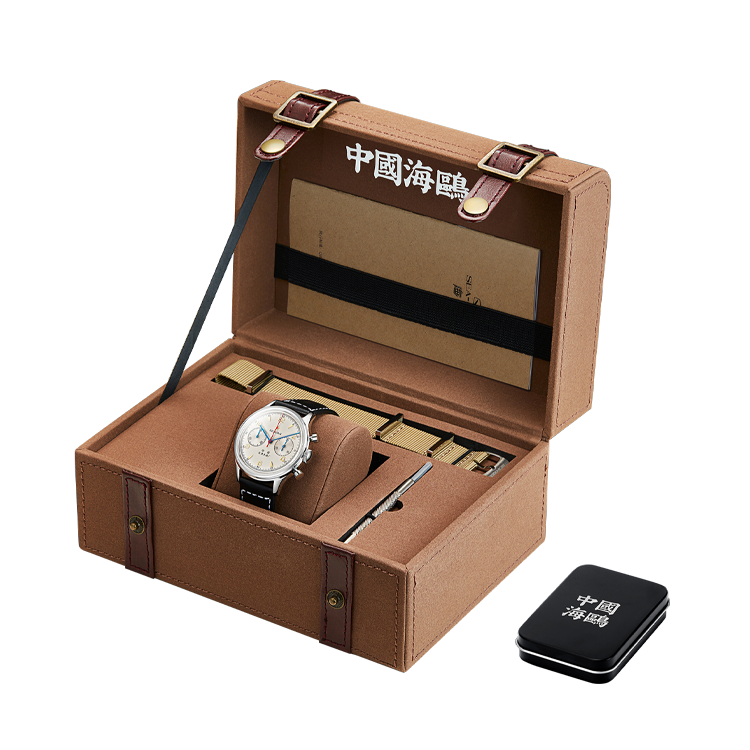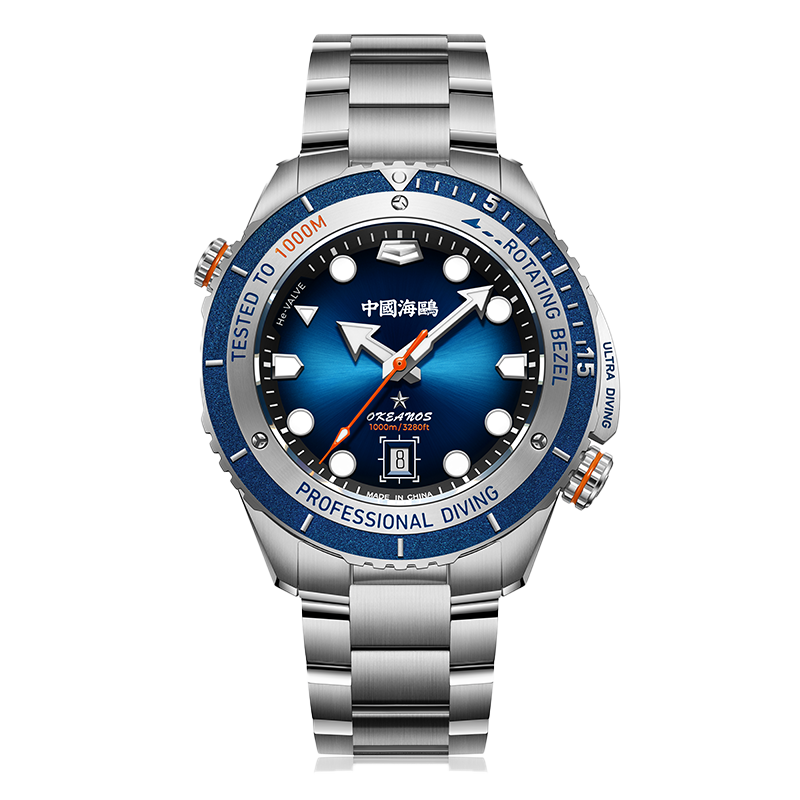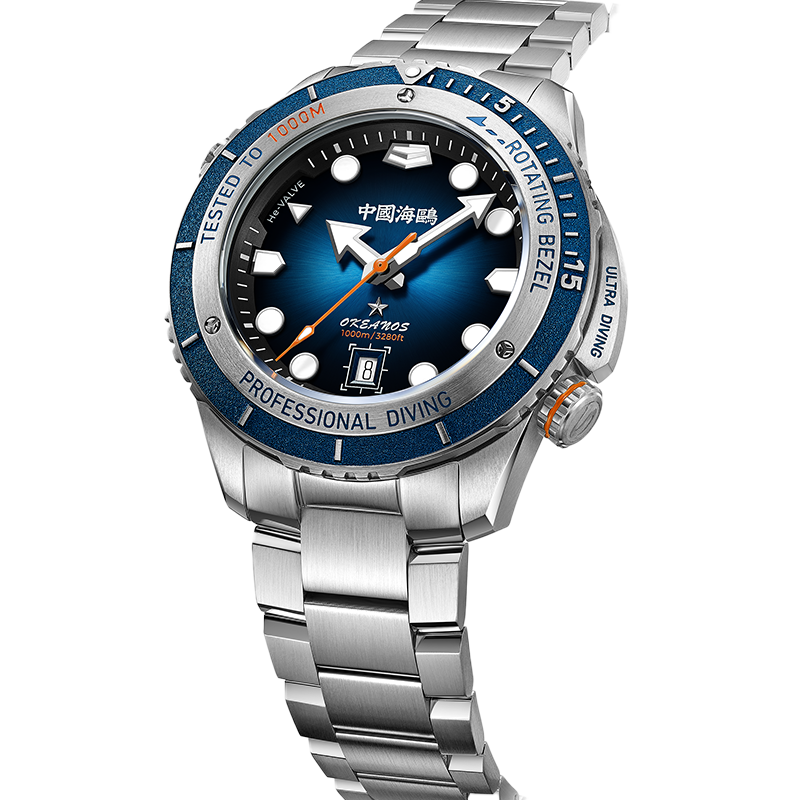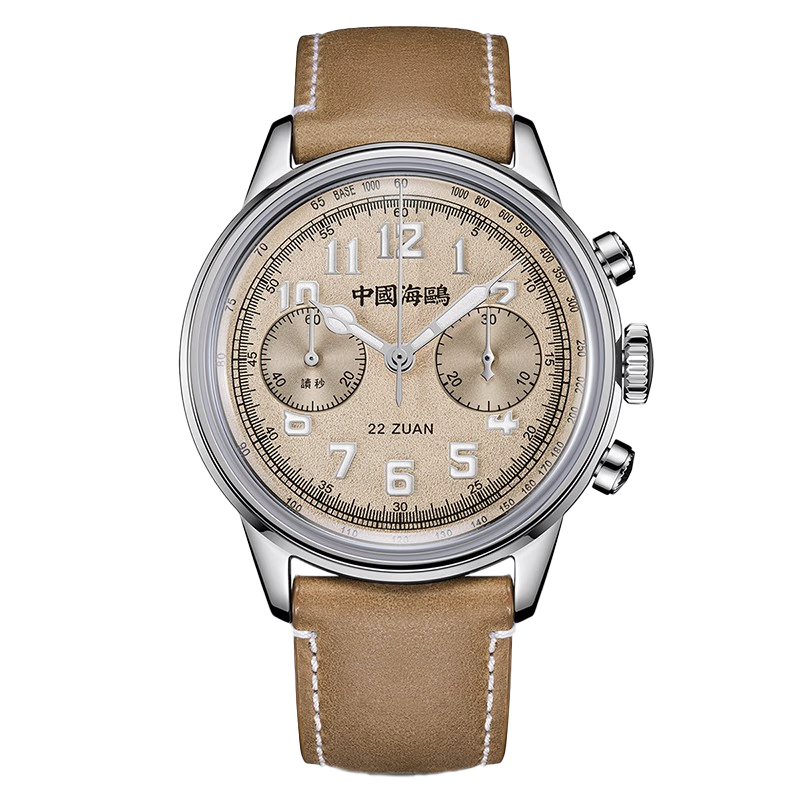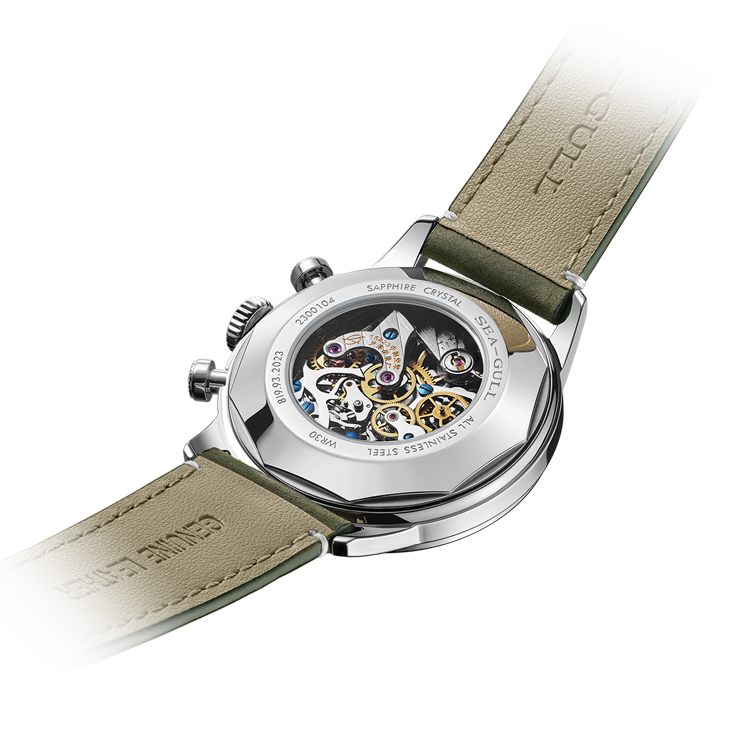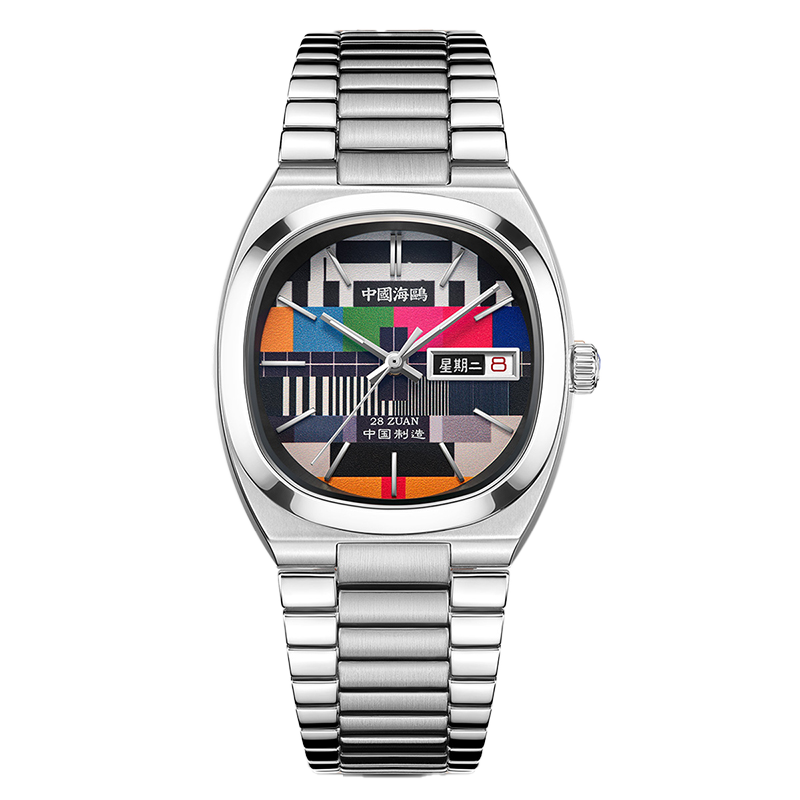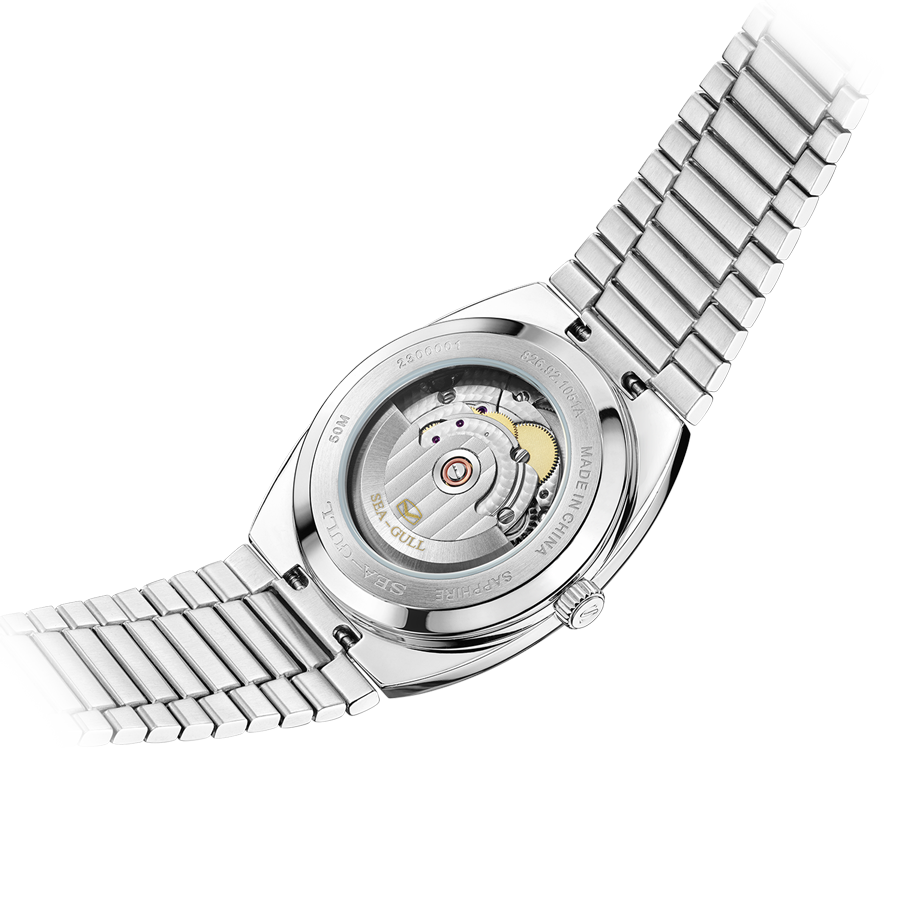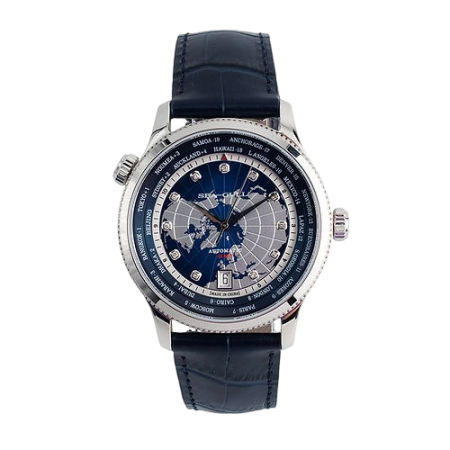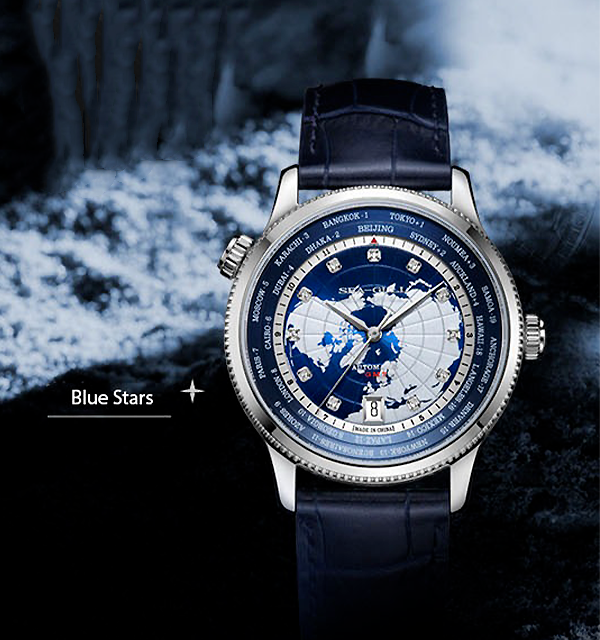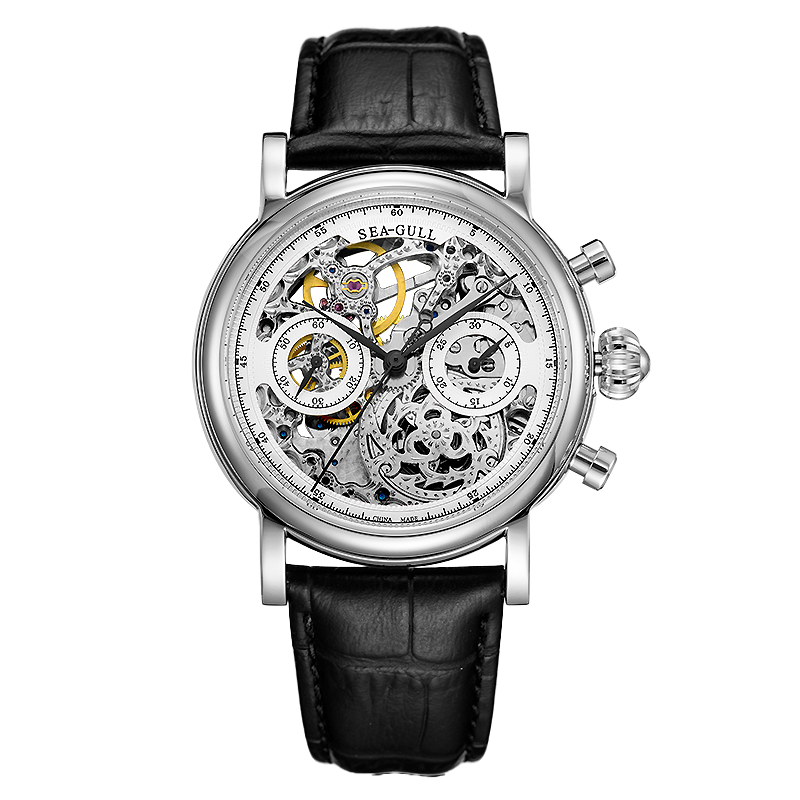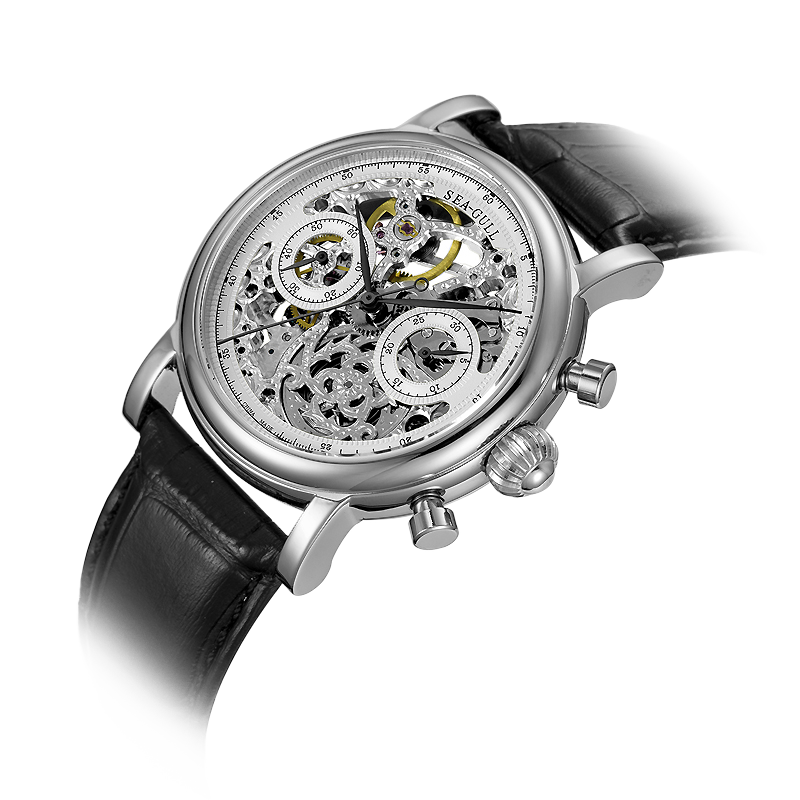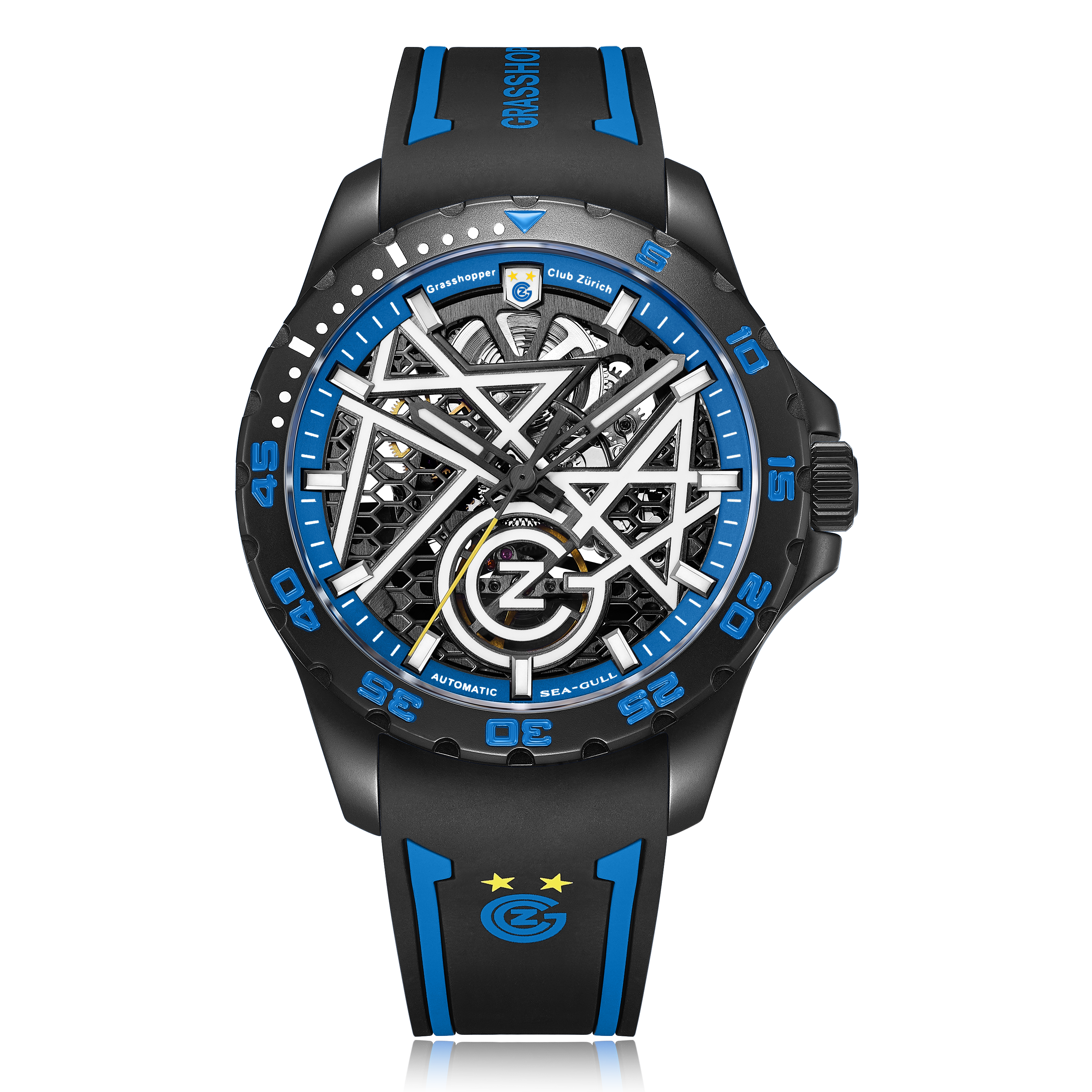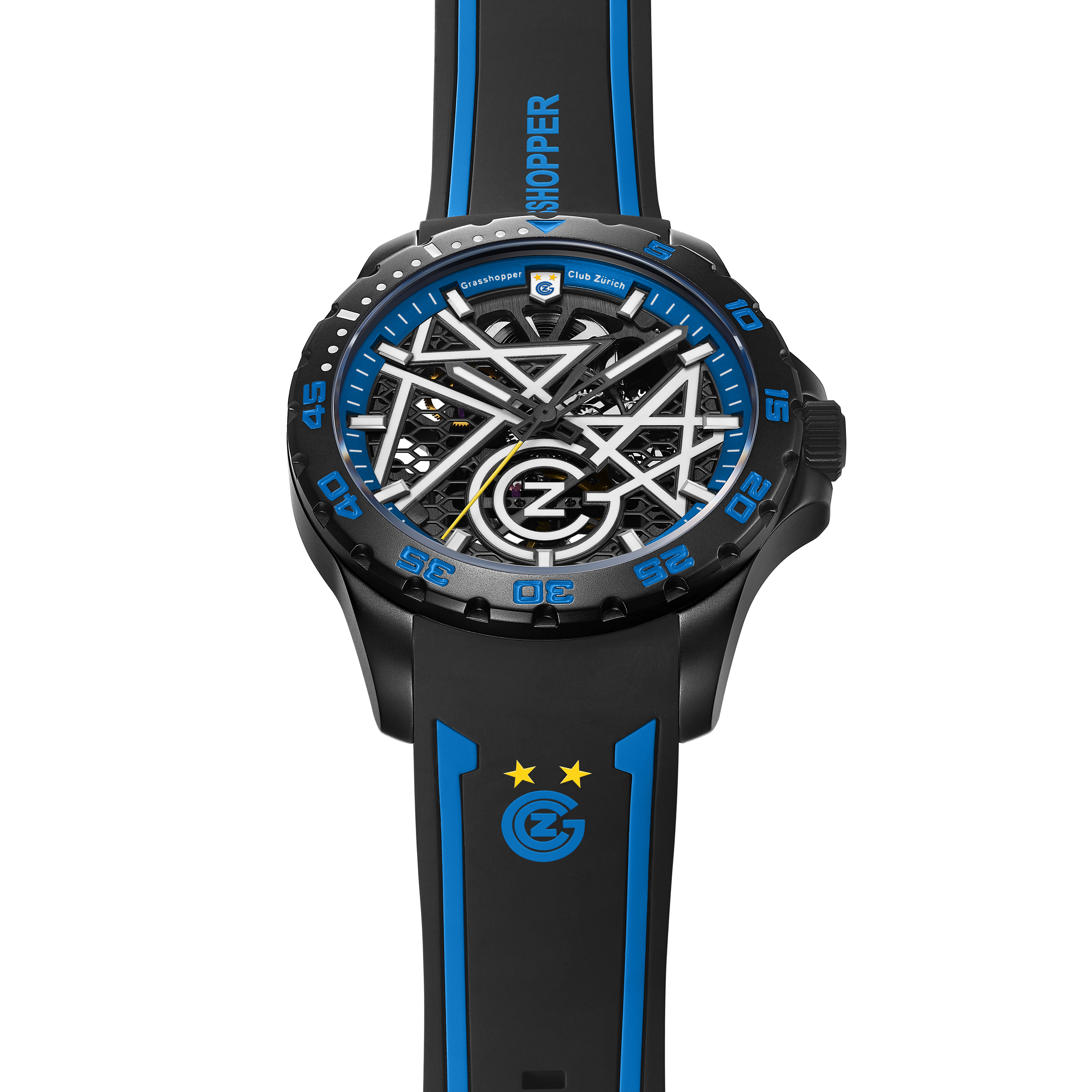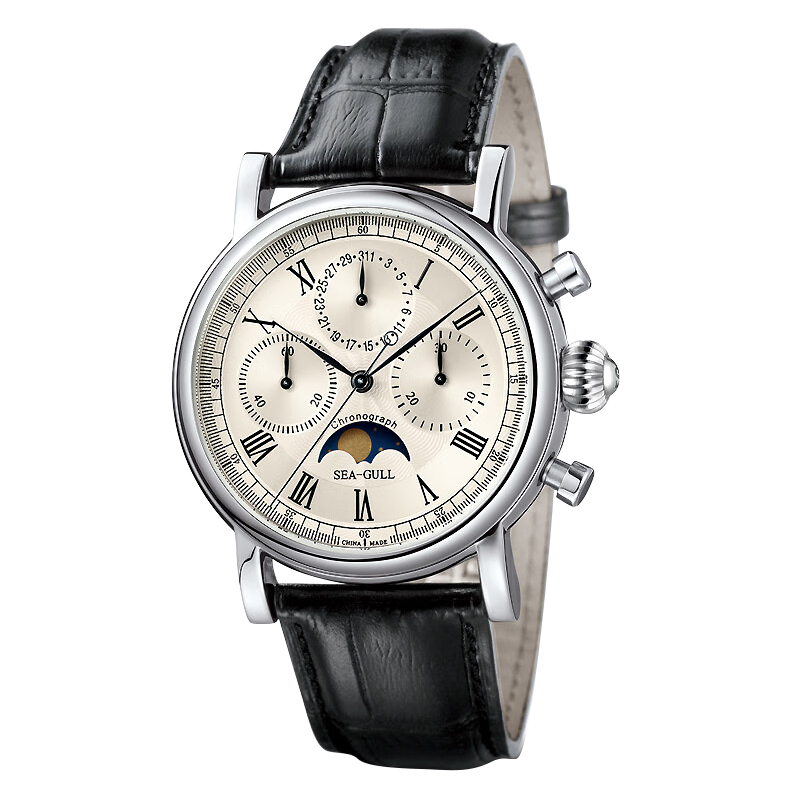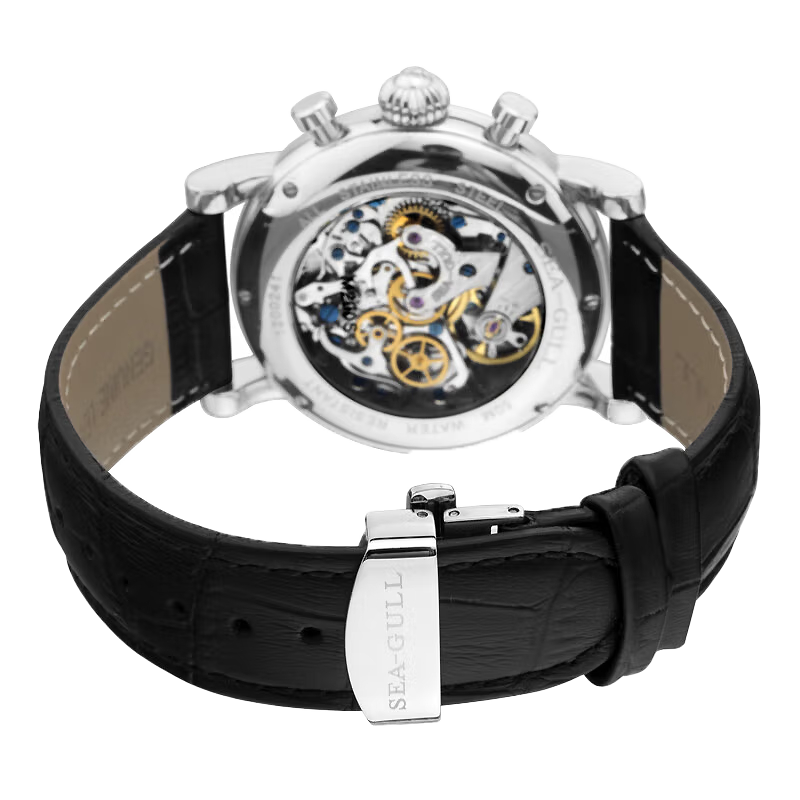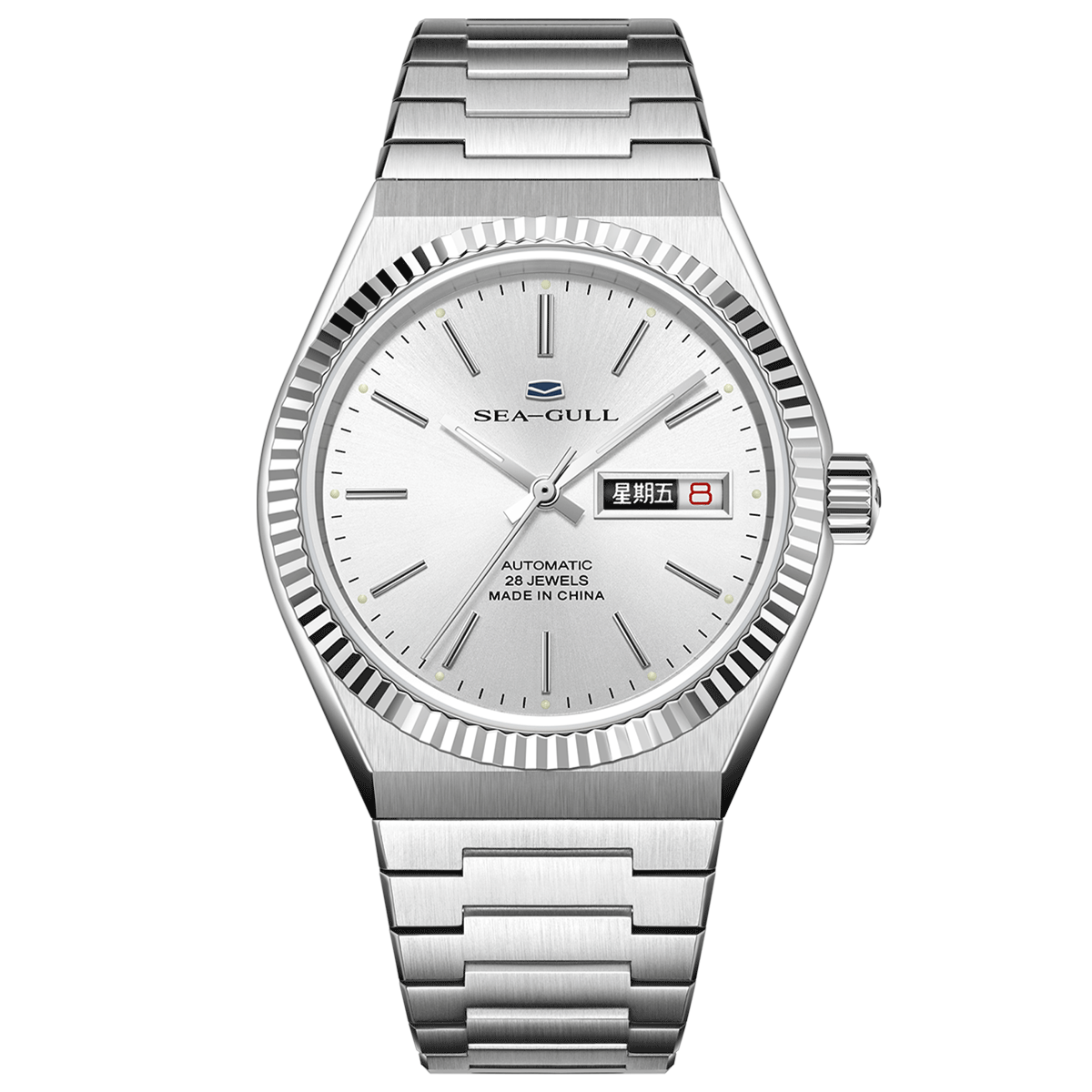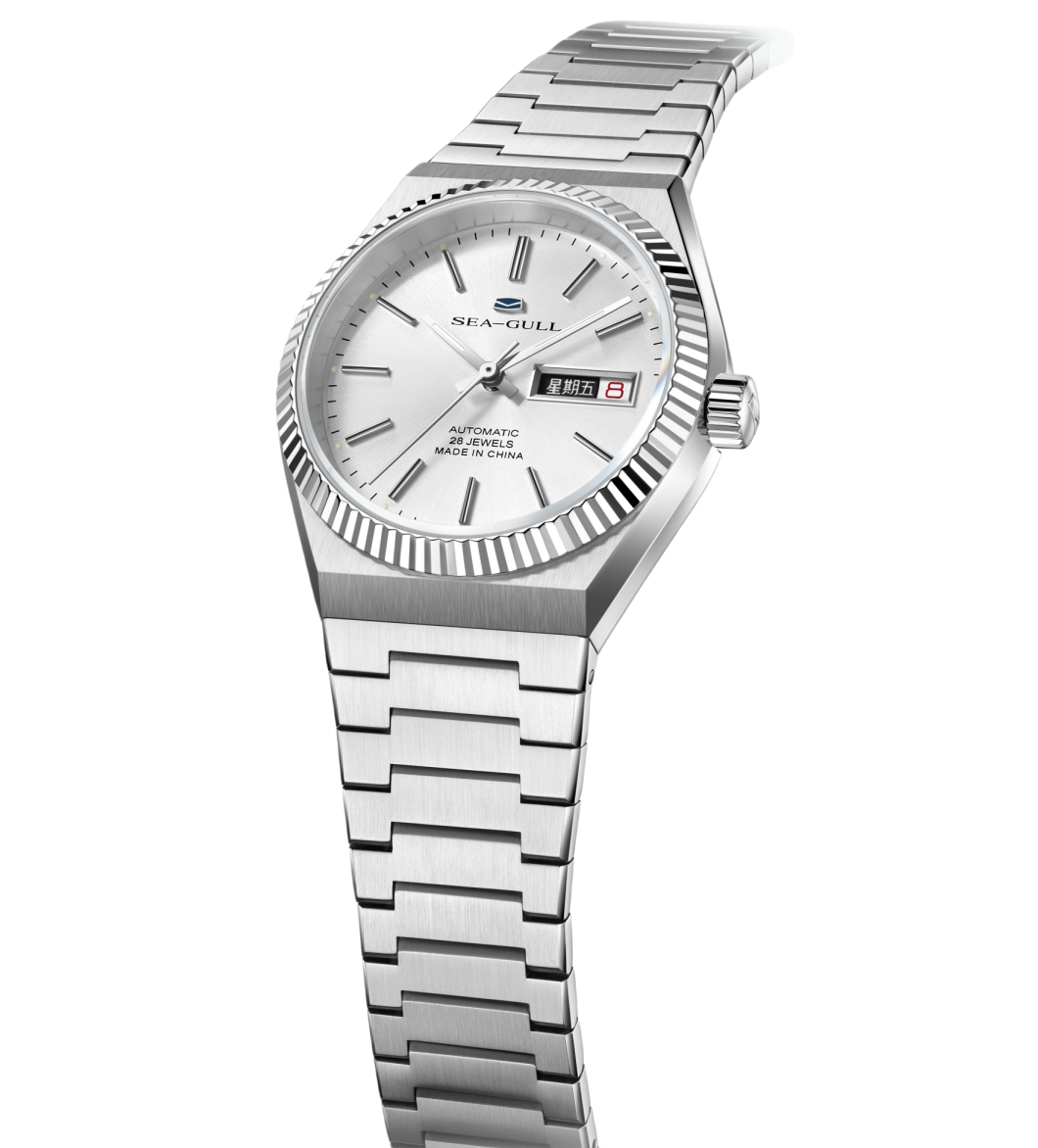Originally published on Watchcrunch.com by Alonzo Tang
At the end of March and beginning of April every year, one of the world’s largest watch and jewelry fairs, the Basel International Watch and Jewellery Show, is held in Switzerland. This exhibition attracts over 2,000 exhibiting brands each year. In addition to being a stage for enterprises to demonstrate their strength, it is also a "battlefield", with the "weapons" being the exhibitors' independent intellectual property rights and patent certificates.
Through experiencing one “battle” after another, Tianjin Seagull Watch Group Co., Ltd. has developed and grown stronger, overcoming the watch industry's "three major classic technologies". Its products include 12 series and over 200 varieties, with over 80% being proprietary intellectual property products, making it the domestic industry leader in patent ownership. Today, Seagull Group is well positioned to enter the high-end global watch arena and confidently face domestic and foreign competition.
What has Seagull Group experienced and gained? Let's look back at the story behind "Seagull's Three International Intellectual Property Litigation Victories".
Crisis in 4 Hours
Sounded the Alarm
As a representative of Chinese watch brands, Seagull Watch had attended the Basel Fair every year since the late 1990s. However, the 2008 Basel Watch Fair left an indelible memory among all Seagull Group employees, as intellectual property protection consciousness was deeply engraved in the minds of all thereafter.
At that time, the fair was divided into 6 exhibition areas according to technical standards. International peers in the watch industry did not think highly of China’s watchmaking capabilities, and Seagull was assigned to the 6th exhibition area with the lowest technical level. However, in this very area, Seagull showcased an independently developed dual tourbillon wristwatch, immediately attracting the attention of all parties, with the booth crowded with international customers coming to inquire and negotiate business.
However, at 3pm on April 6, 2008, four mysterious visitors suddenly appeared at Seagull's booth, including three officials from the Basel Fair's Intellectual Property Committee and an independent watchmaker from the Swiss Fleurier Group. He accused Seagull of infringing on their patented technology with the dual tourbillon wristwatch on display. Not only did they require Seagull to immediately stop showcasing this watch, but they also demanded to take the sample for investigation. This caused customers who were just negotiating orders with Seagull to immediately terminate discussions and stand by.
Wang Deming, then General Manager of Seagull Group, was negotiating business with a customer when he heard the news and immediately became nervous. He knew the consequences of losing would be dire. First, the product would be removed from the fair, with the other party reserving the right to further litigation within a year, and patent infringement could result in a huge compensation payment. More importantly, the company’s reputation would suffer greatly, losing the opportunity to participate in the Basel Watch Fair for two years.
The Seagull side had no experience in dealing with such matters. Wang Deming immediately discussed countermeasures with the heads of Seagull Hong Kong and Seagull Switzerland. They quickly made decisions: 1. Resolutely not let the other party take the watch; 2. Wang Deming would not directly contact the other party for now, and would not sign any of their documents before an accurate conclusion was reached; 3. Immediately contact partner Yip In Lee in Hong Kong to appoint a lawyer and notify the China Watch Association.
Soon, the lawyer promised to come plead the case, saying he would arrive in about 20 minutes. In the meantime, the opponents at Seagull’s booth stepped up pressure, demanding Seagull hand over the dual tourbillon watch within 15 minutes, otherwise the organizing committee would have the right to notify police to assist in forcibly removing the watch.
Seagull staff relayed the news that a Swiss lawyer was about to arrive to the organizing committee, who became more restrained upon learning this. After being informed a Swiss lawyer was coming, they extended the watch handover deadline to 5pm local time.
While waiting for the lawyer, Seagull actively prepared its defense. Deputy General Manager Hou Guilin repeatedly asked Deputy General Manager Ma Guangli, project leader Zhou Wenxia, and legal advisor about the watch patent situation, instructing them to gather evidence.
Now Seagull's Chief Engineer, Zhou Wenxia recalls the tense atmosphere that day, with her deepest feeling being that it was an "emergency". The incident occurred around 9pm China time when she was about to rest. Suddenly Ma Guangli called for her to hurry to the company. After learning what happened, she gasped, but soon calmed down. She was very determined that they would not lose. While rushing to the company by taxi, Hou Guilin sent repeated overseas texts asking, "Are you sure?" Zhou Wenxia thought: Our independently developed product did not copy anything from them. We hadn't even seen their product before, so there must be no problem. She replied firmly: "The dual tourbillon should have no infringement issues, especially the most critical "differential mechanism" has no problems..." By the time she arrived at the factory, as it was off hours, the office building was locked. She first had to find security to open the door before the technicians could enter, wasting precious time. Everyone ran to the office. But regarding the materials needed for preparation, the team had already double checked with the lawyer during the waiting period. Everyone worked together to find the evidence as quickly as possible.
On the other side of the ocean, at 4:20 pm, the lawyer arrived. After learning Seagull's dual tourbillon watch had a China patent and the exhibition team had patent copies, the lawyer told Wang Deming, "Sign an authorization letter appointing me as your representative to plead the case."
At 5:30 pm, Seagull's exhibition team received the defense materials sent from China. After careful comparison, the lawyer became even more confident, because Seagull's dual tourbillon had fundamental structural and appearance differences from the plaintiff's patent. The lawyer then went to plead the case with Seagull's technical backbone.
The chief appraiser at that time was a watch expert from the Fleurier Group's Blancpain brand. He examined Seagull’s disputed watch through its transparent components. As time ticked by, Seagull’s frontline and backend staff anxiously awaited the results. Zhou Wenxia remembers staying up almost all night that day.
Around 7pm, the appraisal results came out. The ruling was written in French, unreadable to Seagull’s onsite staff who could only look to the lawyer’s expression. After carefully reading the ruling, the lawyer’s furrowed brow relaxed and he turned and told everyone, “We can drink champagne now.” Seagull staff finally breathed a sigh of relief with the trouble resolved.
The inspection found three key points: 1. The watch is powered solely by mechanical energy (1 mainspring); 2. The power source drives the precision gears (including 1 large and 2 small plates) to directly display the time; 3. The two tourbillon escapements and two clamping mechanisms establish the time base. Based on these most critical "two tourbillon escapements and two clamping mechanisms", the appraisal group determined the core characteristics of the plaintiff’s patent did not exist in Seagull’s disputed dual tourbillon product. Therefore, showcasing the disputed watch did not violate Switzerland’s patent protection law.
Seagull’s 2008 Basel infringement case underwent 4 nerve-racking hours from response to victory, becoming a classic case of domestic watch brands winning intellectual property disputes abroad. Seagull benefitted from this misfortune, proving its strength before peers worldwide. It was later revealed by the China Watch Association that this was the watch industry’s first litigation victory in China, with previous cases resulting in product removal and compensation. This victory bolstered domestic watchmakers’ morale.
Sharpen Your Tools Before Starting Work
While domestic watchmakers celebrated, for Seagull this victory sounded an alarm. Zhou Wenxia recalls feeling uneasy about the incident in retrospect. “My confidence then came from our original technology without copying, but looking at it today, our awareness of intellectual property protection was inadequate.” She gradually realized first, intellectual property protection has regional limitations. Similar designs may exist in other countries, so non-infringing intentions does not guarantee differences. Second, patent applications have many techniques. Some intellectual property claims very broad scopes. To exaggerate, claiming a patent for a flat platform on four wheels is an automobile would infringe on all later internal combustion, electric, and other cars designed under this broad claim.
Zhang Ming worked in technology before 2008. After the 2008 Basel Fair, she transferred to Seagull’s intellectual property office, specialized in intellectual property. It was this “lawsuit” that spurred Seagull’s intellectual property work to expand systematically. Zhang Ming remembers they had “huge debts” then. Many technicians did not even think of applying for intellectual property patents, did not know how to apply, resulting in structures and designs that could have been patented going unprotected. Some approved patents lapsed due to unpaid maintenance fees. Zhang Ming also had much to learn herself, needing to become familiar with domestic intellectual property laws and international conventions. Seagull’s victory in Basel also attracted related authorities’ attention, with China and Tianjin’s intellectual property administrations providing great support to Seagull.
The intellectual property office first reviewed all new structural and design drafts from recent years, checking not only China’s State Intellectual Property Office system but also comparing with the European Patent Office’s data. For undisclosed designs with patent potential, applications were immediately filed. For products still in design, designers were promptly notified to modify plans if similar existing patents were found.
Soon, Seagull tasted the benefits of patents. At 10am local time on March 29, 2011, Swiss company TF Est. 1968 complained Seagull’s showcased co-axial tourbillon product and the use of “CO-AXIAL” infringed their rights. Unable to fault the technology or appearance, competitive opponents resorted to trademarks.
The organizing committee required related evidence and materials be presented within the deadline of 6pm that day. At that time, it was already 5:40pm. Drawing on professional knowledge and experience, onsite staff determined “CO-AXIAL” was merely a generic English description for “co-axial” found in any dictionary. The trademarks relied on “CO-AXIAL” combined with many other elements, so Seagull could not possibly infringe. The team then frantically searched academic literature for evidence, finally finding a 1970s article by a British author using “CO-AXIAL”, while Omega’s trademark was early this century. They swiftly prepared a written statement and submitted it to the organizing committee before the deadline. Meanwhile, they requested Tianjin fax supplemental materials to prepare for further appeals if the initial ruling was unfavorable.
The next day, the exhibition organizing committee's Intellectual Property Committee ruled in Seagull’s favor.
After this “lawsuit”, Seagull’s intellectual property protection work became even more comprehensive, especially regarding trademarks. When initiating the early warning system before exhibitions, staff also searched the Swiss trademarks database. Now Seagull requires all new products have proprietary intellectual property protection, including invention patents, utility model patents, design patents and trademarks. Seagull applied for its first patent in 1999. By March 2008 when it attended the Basel Fair, it had filed 148 total applications, including 5 invention patents, 41 utility models, and 0 international patents. Today, by the end of 2017, Seagull has filed 1,053 total applications, including 105 invention patents, 256 utility models, and 22 overseas applications. It has been granted 965 total, including 67 invention patents and 244 utility models.
To better mitigate risks, on March 1, 2017, Seagull signed with China Pacific Property Insurance Co., Ltd. Tianjin Branch to become China’s first enterprise insured for "Overseas Exhibition Intellectual Property Dispute Legal Expenses".
Developing Cutting-Edge Technologies Requires Self-Reliance
Tianjin Seagull Watch Group Co., Ltd., as the birthplace of “China’s first watch”, currently has over 2,000 employees, with senior professionals and technicians accounting for about 10%. With such talent, Seagull has developed the capacity to produce 5 million mechanical movements and 300,000 finished watches annually. Seagull is particularly ahead domestically in movement design and manufacturing, and is gradually gaining international recognition. Seagull Technology Center was accredited as a “State Accredited Enterprise Technology Center” in 2009. In 2011, it was recognized as one of the first “National Technology Innovation Demonstration Enterprises”. Seagull Industrial Design Center was designated as a national-level center in 2013.
In the view of Seagull Technology Center Director Zhao Guowang, developing cutting-edge core technologies is the foundation and creed of enterprise growth.
In early 2005, Zhao Guowang began the R&D and design of Seagull’s minute repeater watch. It took seven to eight months to complete the design drafts, but sample production was unsuccessful. Why? The processing was unachievable. A gear adopted internal teeth with 0.1mm tooth spacing, requiring high surface smoothness, beyond Seagull’s equipment precision then. The parts produced were too rough to use. Could manual grinding work? What hand tools could be thinner than 0.1mm? Even needles were thicker. So progress stalled there.
To upgrade its product lines, Seagull spent heavily to import new equipment, using 0.03mm fine wires to cut parts, costing over 100 yuan per part. As samples were produced, Zhao Guowang anxiously hovered over the artisan: 100 yuan a piece, 100 yuan a piece...
After the minute repeater watch R&D succeeded, Zhao Guowang devoted himself to developing an ultra-complex movement combining minute repeater, calendar and tourbillon functions. Nearing the final design sprint, leadership arranged for him to stay alone for two months in a village home at the foot of the mountains to concentrate on the drawings. In the end, the full set of drawings totaled 300 pages. Normally, after drawings were completed, design, drafting, proofreading, standardizing, auditing and approval were handled separately. But Zhao Guowang was solely responsible for this set, as the over 50 interrelated parameters on each drawing were incomprehensible to the unfamiliar. He had to repeatedly verify the data himself and ultimately be accountable for assembly as well. Fortunately, the over 200 types and 435 total parts manufactured according to the drawings succeeded in one assembly.
After this success, Seagull did not rest on its laurels and continued to forge ahead. Seagull’s design team contemplated: Seagull’s quarter repeater watch debuted in 2006, the minute repeater watch in 2007; Swiss watchmakers took 100 years to make such progress, while we only needed 1 year. It seemed remarkable, but where was the originality?
Thus, creating unprecedented products became Seagull’s consensus. Another design brief for a self-striking watch landed on Zhao Guowang’s desk. Self-striking watches automatically strike the time while question watches require manual operation. Due to structural constraints, traditional self-striking watches strike the time in a very different order from question watches. Seagull’s challenge this time was to make the self-striking watch strike the time in the same order as the minute repeater watch. This single change required resetting the intricate internal mechanisms. Design began in 2010 and the original drawings were not completed for four years, containing over 500 parts. Sample production started in 2014 and is still being refined without market launch yet.
Why does an enterprise devote so much human effort, financial resources, and materials to technology development and patent protection? Is it just to make quick money? Clearly not. The people at Seagull understand that any forward-thinking technological innovation is difficult for the current market to digest. Its economic benefits may not be realized for several years, even decades. So they steadfastly work, learning through trial and error in practice. This is an important reason why Seagull has been able to continually develop and grow stronger.
Why are they "enthusiastic" about innovating at a loss? A company's constant progress and exploration in establishing brand value is not "losing money", but rather a long-term "strategic investment". It determines the stature of the enterprise. This is Seagull's corporate culture. You cannot just look at short-term gains. This is very difficult to achieve. As Zhao Guowang said: "Looking back today, this struggle laid Seagull's core competitiveness. But thinking back to that time, we just wanted to make products that would astound the world. Apart from 'faith', there's no better way to explain it.

